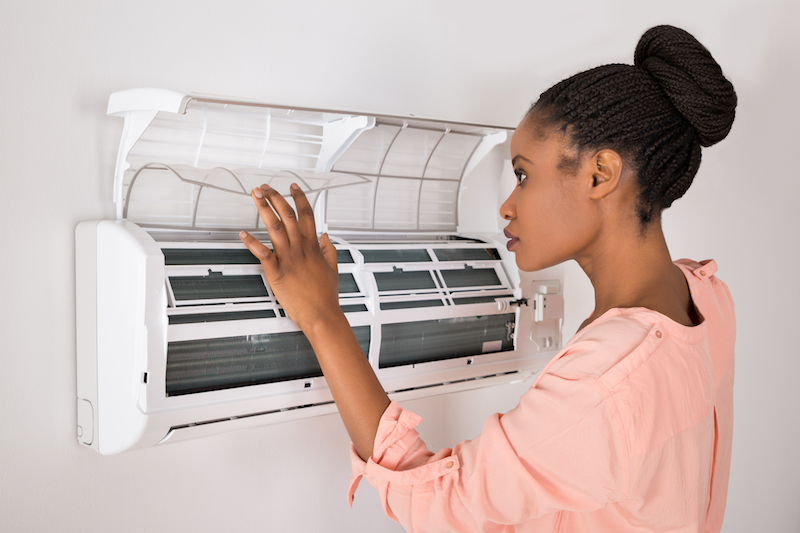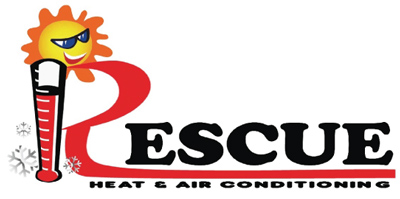
You shouldn’t be forced to compromise on comfort or drain your wallet to keep your home at the right temperature during hot days.
But what is the right setting, exactly? We go over ideas from energy experts so you can find the best setting for your family.
Here’s what we recommend for the most energy-efficient setting for air conditioning in Alice.
Recommended Thermostat Settings for Summer
Most households find setting the thermostat at 72-73 degrees provides ideal comfort. However, if there’s a sizeable difference between your indoor and outside temperatures, your AC expenses will be bigger.
This is our advice based on the U.S. Department of Energy (DOE) and ENERGY STAR®.
While at home: 78 degrees. While that appears hot, there are ways you can keep your residence refreshing without having the air conditioner running frequently.
Keeping windows and curtains down during the day keeps cold air where it needs to be—within your home. Some window coverings, like honeycomb shades or plantation shutters, are made to deliver added insulation and improved energy conservation.
If you have ceiling fans in your residence, the DOE says you can move thermostat temps about 4 degrees hotter without giving up comfort. That’s due to the fact they freshen by a windchill effect. As they cool people, not spaces, switch them off when you move from a room.
If 78 degrees still seems too hot at first glance, try running an experiment for a week or so. Begin by increasing your temperature to 78 degrees while you’re at your residence. Then, gradually turn it down while following the tips above. You may be astonished at how comfortable you feel at a hotter temperature setting.
While away: 88 degrees. There’s no reason to keep the air conditioning running all day while your home is empty. Moving the temperature 7–10 degrees hotter can save you as much as 5–15% on your electricity bills, according to the DOE.
When you get home, don’t be tempted to put your thermostat below 78 to cool your residence faster. This isn’t effective and typically results in a more expensive cooling bill.
A programmable thermostat is a helpful way to keep your temp in check, but it requires setting programs. If you don’t use programs, you run the risk of forgetting to move the set temperature when you leave.
If you’re looking for a convenient fix, consider getting a smart thermostat. This thermostat works with with your phone, so it realizes when you’re at your residence and when you’re out. Then it automatically changes temperature settings for the best savings. How much exactly? Usually $180 each year on heating and cooling, according to ENERGY STAR.
Another perk of getting a smart thermostat? You can use your phone to watch and change temperature settings from almost anywhere.
While sleeping: Around 70 degrees. While ENERGY STAR suggests 82 degrees, that could be unbearable for the majority of families. Most people sleep better when their sleeping space is cold, so that’s why the National Sleep Foundation recommends 60–67 degrees. But that may be too cold, due to your clothing and blanket preference.
We suggest running a comparable test over a week, putting your temp higher and steadily turning it down to choose the ideal temperature for your house. On mild nights, you might find keeping windows open at night and running a ceiling fan is a preferable solution than running the air conditioning.
More Methods to Save Energy This Summer
There are added ways you can spend less money on cooling bills throughout hot weather.
- Get an energy-efficient cooling system. Central air conditioners only work for about 12–15 years and get less efficient as they become older. An updated air conditioner can keep your residence more comfortable while keeping cooling expenses small.
- Schedule yearly air conditioner service. Routine air conditioner maintenance keeps your system running smoothly and could help it run more efficiently. It could also help lengthen its life span, since it helps professionals to discover small issues before they lead to a major meltdown.
- Change air filters often. Use manufacturer instructions for changing your air filter. A dusty filter can lead to your system short cycling, or switch on and off too much, and raise your energy.
- Check attic insulation levels. Just about 90% of houses in the United States don’t have proper insulation, according to the Insulation Institute. Many southern climates need 13–14” of attic insulation, while northern climates need 16–18”.
- Have your ductwork inspected. Ductwork that has come apart over time can leak cold air into your attic, walls or crawl space. This can lead to big comfort troubles in your house, like hot and cold spots.
- Seal cracks, doors and windows. Keep humid air where it belongs by plugging cracks. You can also caulk or weather strip doors to trap more conditioned air inside.
Conserve More Energy During Warm Weather with Rescue Heating & Air
If you are looking to use less energy during warm weather, our Rescue Heating & Air experts can provide assistance. Reach us at 361-265-4371 or contact us online for extra information about our energy-saving cooling options.
